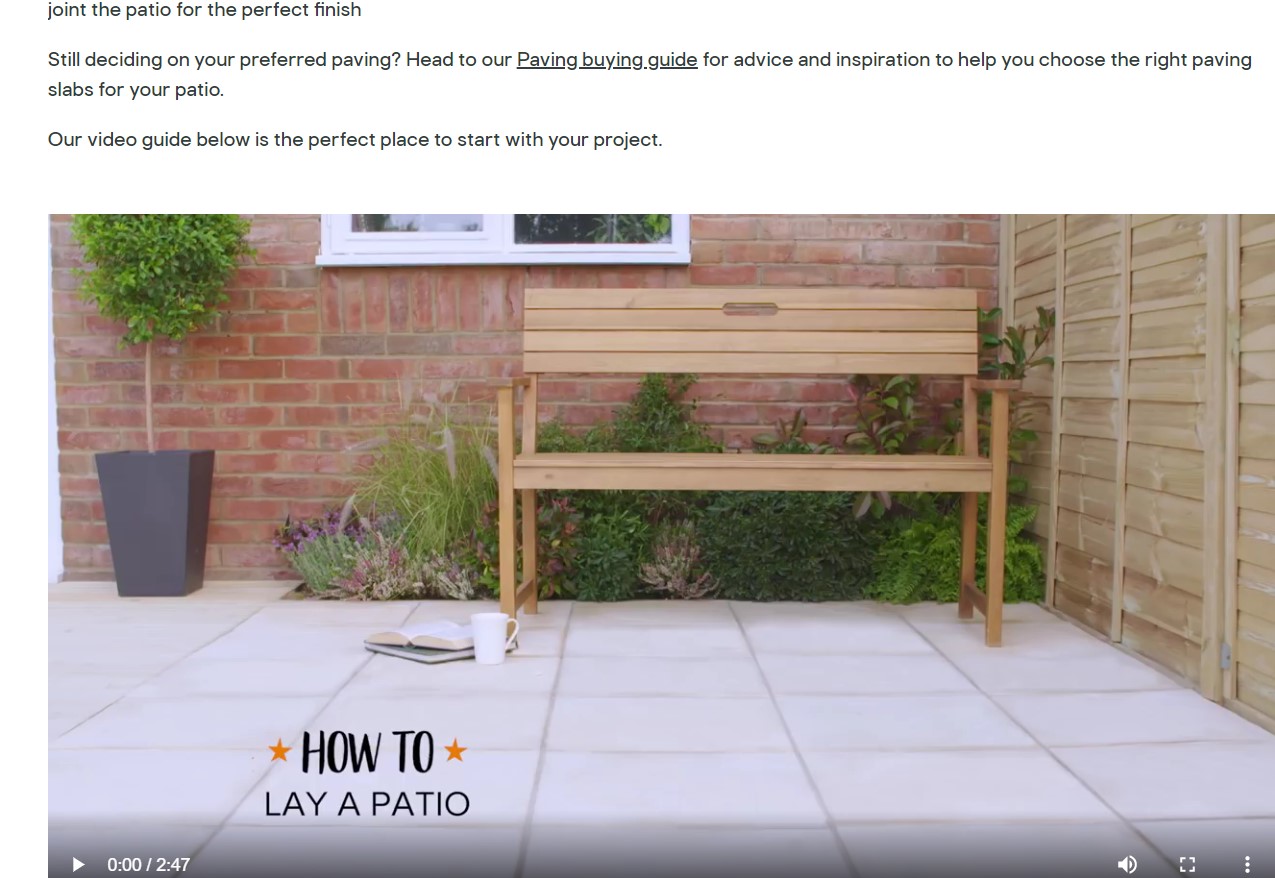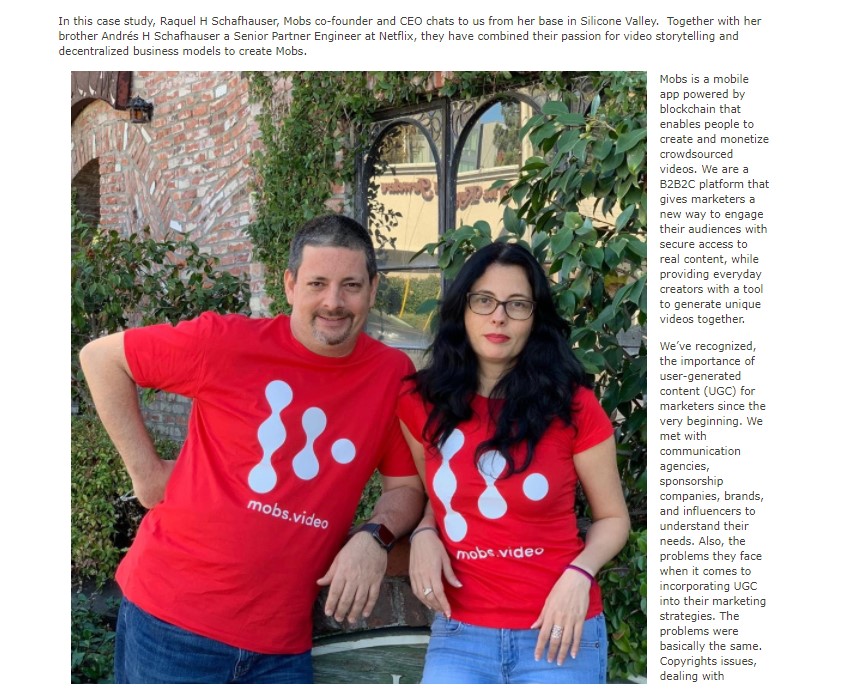Stuck for ideas on what to post next on your blog? I hear you. Different styles of blogging give you to chance to test what works best, capture new readers and adjust your strategy going forward. They also allow you to cover different topics in new and exciting ways. I’ve compiled 7 types of blog content to try out for your brand and what’s driving engagement in 2021. Let’s go!
#1 ‘How-to’ videos
Embedding videos into a small blog article is a thing. Actually, it’s a thing that works very well. Essentially, you would write a great title, intro and outro paragraph and embed your video into the blog. This can easily be done if the video was already uploaded to YouTube.
As you know, video content is the hottest content marketing commodity right now. The average person watches 18 hours of online video each week – an increase of two hours from one year ago and 7.5 hours across the last three years. Explainer videos make up a large portion of this. In fact, 96% of people have watched a video tutorial to learn more about a product or service and 73% of video marketers have created one in the past (making them the most commonly created type of branded video). Of course, the quality of content and video also has a big impact on how people stick to these video channels. This is where video editing software like Video Enhance AI (you could try this out) comes into play. The audience would always stay loyal to good quality video content creator over any amateur.

What kind of tutorials/how-to videos should my brand make?
Ideally, there should be both a written article and a video tutorial for any new product or service your brand creates. Styles of video tutorials could include:
- Whiteboard animation: hand-drawn style animation that resembles a marker on a whiteboard using text, pictures, or a combination of both – these are fairly easy and low-cost to produce. That said- these are now becoming a bit dated so if you’re going down this route, be sure to shake it up a bit!
- Live-action: using real people to explain a topic – great for connecting to audiences on an emotional level but more time-consuming and costly if you use hired actors.
- Motion graphics: a combination of real imagery with animation and effects – can create eye-grabbing visuals.
- Screencasts: great for showing how to navigate your platform/website or how to use a particular service offered by your brand.
- Animated explainers: animated videos, using digitally created drawings and text boxes – these can be 2D or 3D style but 3D carries a higher production cost.
It’s entirely possible to use any combination of the above styles. Just avoid overwhelming the watcher with a smorgasbord of ideas that detract from the product or service you’re explaining how to use.
Important tip: Always provide subtitles on any video content you produce. This is from both an accessibility standpoint i.e. for deaf and hard-of-hearing viewers but also to avoid losing out on viewers that want to watch without sound – for example, people out in public or at work without headphones. We would also recommend working with a Cinematic Video Production company to ensure you create great quality, informative videos.
#2 How-to articles
An accompaniment to your how-to video, how-to articles are also known to bring in traffic. A quick look at Google Trends will show you just how popular the search term ‘how to’ is.

The term ‘how to’ saw a peak during the first wave of the global pandemic when more people were stuck at home; it seems evident that with extra time on their hands, people wanted to try their hand at learning a new skill.
Regardless of peaks and troughs in the popularity of the search term, it has consistently remained a top Google search term for a number of years and this popularity shows no sign of waning. Always create a how-to article to go along with your how-to video, or if you’re unable to create a video, at least publish the article as a standalone piece.
How To articles don’t need to be super lengthy. In fact, they shouldn’t be. Give the readers what they want with step by step instructions, numbered lists and screenshots or photos of the process. Be sure to take good-quality photos and edit them well. Make use of a good photo editor software like PicMonkey after checking its reviews on sites like https://serp.co/reviews/.
#3 Case Studies & Video Testimonials
84% of people have been convinced to buy a product or service by watching a brand’s video. Similarly, consumers are heavily influenced by case studies featuring real clients. Remember that today’s shoppers conduct their research before making a purchase. Case studies help to show how your product or service is the solution to the consumer’s problem.
Check out this Contentworks Agency case study featuring MOBS

Video testimonials can also bring your brand visibility up in Google search results since the search engine is really pushing video content right now. Your video can be accompanied by a mini blog article that includes:
- A background on the customer and how he/she found you
- The problem- What was the challenge that the customer faced?
- The solution – How did your product help meet the client’s needs?
- The feedback – How is the product meeting the clients needs today?
- The CTA- how can readers get the product? How should they contact you?
#4 Listicles
Yes, listicles have been done to oblivion. But why fix what isn’t broke? Regardless of your feelings towards this blog post style, you’ve probably read a few of them in your time. Not all of your brand’s blog content needs to be thoroughly researched whitepapers and thought leadership. Often, consumers are looking for escapism content – something that’s easily digestible and a quick read. The no. 1 listicle publisher has to be Buzzfeed – arguably the brand that single-handedly catapulted their popularity. On YouTube, Watch Moji and TopTenz has cornered the listicle market.

There’s an obvious reason why the news and entertainment brand still continues to churn out listicles non-stop after all these years: they bring in huge amounts of traffic. Listicles should not be overlooked.
What styles of listicles can my brand post to its blog?
- Educational: people are using their newfound free time to learn new skills. An educational listicle from your brand could be ‘13 Ways to Get More Likes on Instagram.’
- How-to: as discussed, how-to articles are incredibly popular right now. How-to articles don’t always have to be about your products or services but can also be used to position your brand as an industry leader. For example, ‘How to Write a Whitepaper in 10 Easy Steps.’
- Advice: for example, ‘7 Ways to Deal with Bad Press.’
- Opinion: an opinionated listicle with a divisive title is often a good traffic driver, for example, ‘9 Reasons Content Marketing is Dead’ (it isn’t). Upon reading the title, readers are instantly shocked and want to learn more. A title like this, combined with a clever spin explaining how certain methods of content marketing are less effective and what your brand is doing to combat this can create clickable content.
#5 Seasonal content
Although regularly posting seasonal content is more work due to its shorter lifespan as compared to evergreen content, seasonality is an effective traffic driver often with a high conversion rate.
The search term ‘best subscription’ peaks just before Christmas with consumers looking for last-minute gift ideas that don’t require shipping. Depending on the nature of your brand’s products and services, you’ll want to devise a plan to post strategically timed seasonal content that drives clicks.

TIP- Seasonal content can be respun and reused. Let’s say you had a super successful Christmas Marketing Tips blog in 2020. Reword it for 2021 and include fresh images, examples and CTAs.
#6 Ebooks, whitepapers/reports & other downloadables
Posting downloadable content conveys to readers that your brand is competent, strategic, and a leader of your sector. Additionally, if your downloadable is good enough, readers may share it among colleagues and friends.
Downloadable content can boost your brand visibility and, of course, you can use your downloadables as leverage for qualified lead generation – audiences are more likely to leave their email addresses if they get an ebook, whitepaper, or whatever your downloadable is in return.

Downloadables should be accompanied by a blog post that:
- Explains and hypes what’s on offer (if it’s FREE then say it!)
- Define the audience that the downloadable would benefit
- Gives a sneak peek into what’s inside without giving too much away
- Provides reasons why someone should download
- Generates excitement with a CTA and next actions
TIP- Include a few screenshots or graphics from the downloadable to sweeten the pot.
#7 Collaborations
Collaborative content refers to any content involving other brands, organisations, experts, or influencers. Not only do collaborations boost your visibility among the audiences of your collaborators but they also establish your brand as a community player within your industry.
What sort of collaborative content can my brand produce?
- Roundup: invite niche experts to discuss industry-specific problems or topics. EG- 5 Experts Give Tips on Video Marketing
- Interviews: with an expert or a partnered brand. the backlinks to them will sweeten the pot if your site is well optimised. Be sure to include photos.
- Events: detail how your brand has collaborated with a charity or NGO to tackle an issue surrounding your industry. Cover events for people who couldn’t attend and report on new launches or product updates.
No matter the form of collaborative content you choose, it’s important to ensure you and your collaborator have a sound relationship. You’ll also want to think about the kind of questions that will be asked or the topics of facilitated discussions so that both your brands achieve good traction and engagement.

Content marketers are working harder than ever in the current climate. If your brand needs a helping hand with blog content, social media management or content marketing strategy get in contact. Enjoyed reading 7 Types of Blog Content to Try Out? Go ahead andf hit share or tweet me @Charli_Says